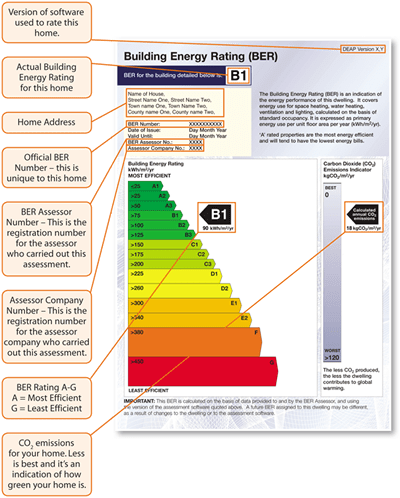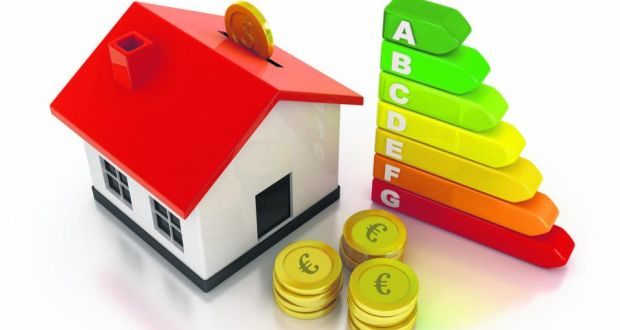BER stands for Building Energy Rating, and is a rating given to your home (or any building) based on the overall energy efficiency of the building on a scale of A to G, with A1 being the most energy efficient rating you can get! It indicates the level of carbon dioxide emissions for the home at the time of certification.
Obviously most homes should aim to have the closest rating to A1 as possible as A-rated homes are the most energy efficient and will have the lowest energy bills.
The BER is based on the “calculated energy performance and associated carbon dioxide emissions for the provision of space heating, ventilation, water heating and lighting under standardised operating conditions” *source: SEAI
How to get a BER
An owner must provide a BER to prospective buyers or tenants when a home is offered for sale or rent, similarly- the property’s BER must be displayed on all advertisements if an owner is selling or renting their property.
Various different providers offer BER assessments, so we suggest that you shop around to get the best value possible. Typically, a 10 year BER for a 2/3 bed house costs around €125.
Your BER assessment must be carried out by an independent assessors registered with SEAI for it to be valid – A list of registered BER assessors is available online on the SEAI website.
So how much difference does having a good BER make?
Homes, energy use and saving money
The average 3 bed semi detached house built before 2004 has a BER of E1, which would result in an annual fuel cost of €2450, based on typical occupancy and average energy usage. But the same house, with a BER of C would cost just €1300 per year, a difference of over €1000! So if you have a higher rating, it might be in your interest to look into improving your BER!

Improving your BER
You can take certain measures to improve your BER and in turn reduce your annual energy bill, and who doesn’t like lower bills! Some of the measure can be as simple as adding more insulation to your hot water cylinder!
Some handy measures include:
Insulating the hot water cylinder and pipework
Increasing the insulation in the walls/attic/floor
Installing advanced energy efficient glazing
Measures to achieve controlled healthy ventilation
Replacing an old or inefficient boiler with a more efficient boiler
Installing modern heating controls
Installing certain types of renewable energy heating systems *source: SEAI

